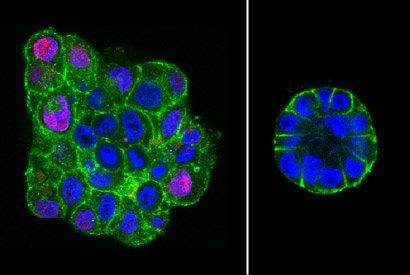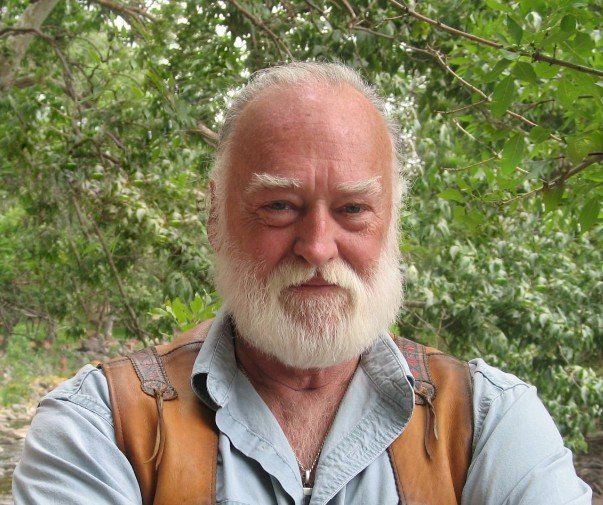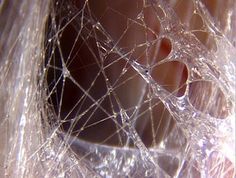Myofascial Release
as an Alternative or Adjunct Cancer Therapy: Biomedical Research and Scientific Rationale

Researchers at the UC Berkeley and the Lawrence Berkeley National Laboratory have shown for the first time that mechanical forces (i.e. sustained pressure) alone can revert and stop the out-of-control growth of cancer cells
If you are interested in the nitty-gritty of fascia and biomedical research, then this article is for you. And if you are interested in the biomedical research supporting massage or myofascial release for cancer patients, this article is doubly
for you!
As you may know from reading my bio here on this website, before I became a myofascial release practitioner I was a biomedical researcher at the National Institutes of Health and the University of Maryland School of Medicine. Although I no longer do such work, I still have a soft spot for science, and I was compelled to write this article after hearing so much negative, misleading or downright false information about massage and cancer. I found that many cancer patients were not getting the help they needed because they had heard false rumors that massage could spread cancer. So in service to cancer patients everywhere, I'm here to set the record straight.
Unfortunately, research in myofascial release is fraught with difficulty. The main reason for this is that there is no placebo for bodywork ... in other words, there is no "fake" myofascial release. Both the patient and the practitioner know if real myofascial release is being done or not. So, any study on MFR cannot be considered "double blind placebo controlled" and is therefore automatically rejected by the medical community regardless of what the results might be. Still, we can piece together research from many different fields, most notably the fields of biophysics and mechanobiology, and come up with a pretty compelling picture of how the sustained pressure of MFR may benefit cancer patients. Read on!

John F. Barnes, PT, developed his Myofascial Release Approach over 50 years ago and has helped countless cancer patients on their road to recovery
The John F. Barnes Myofascial Release Approach is a highly specialized manual therapy which focuses entirely on the fascial system. Developed over the last 50 years by John F. Barnes, PT, this work goes beyond conventional massage and physical therapy modalities, and employs slow, gentle, sustained pressure to induce a phase change in the ground substance of the fascia from a gel to a more liquid state (1). This frees the collagenous component of the fascia embedded within the ground substance, restoring fluid motion and relieving the pressure restricted fascia exerts on internal organs and other structures (2) while the extra space created in the extracellular matrix allows nutrients and waste products to flow in and out of cells more efficiently. In addition to pain relief, patients often feel lighter, both physically and emotionally. They often notice benefits such as elevated mood and improved cognitive and digestive functioning, even when these issues have not been their primary reason for seeking therapy. Often, they are simply happier.
The physiological mechanism of myofascial release incorporates both the piezoelectric nature of the fascia itself as well as mechanotransduction to transform the extracellular matrix, ie the environment in which all our cells live; in this way, mechanical forces may be translated into biochemical changes within the cell. Decades of research by Dr. Alfred Pischinger (3) has shown that fascia surrounds and connects every cell in our bodies and provides a mechanism for intercellular communication. Each one of our 35-75 trillion cells is embedded with the fascial bed of tissue, and this tissue is the immediate extracellular environment of all cells. Any substances or vibrations that enter or leave each cell must pass through this extracellular fascia. In addition, the in vivo fascial research of the French surgeon Dr. Jean-Claude Guimberteau (4, see photo) has provided extensive, paradigm shifting insight into the physiology and function of living fascia, showing the fractal nature of connective tissue and the contiguous transmission of mechanical forces from the surface of the skin to the nucleus of the cell and the depths of the bone. In fact, current research in mechanobiology “clearly demonstrates that mechanical forces are as important biological regulators as chemicals and genes, and it shows the immense potential of developing mechanotherapies to treat injury and disease.” (5)
In addition, research shows an increase in interleukin-8, 3, and 1b with sustained pressure (6) and CD19 with myofascial release techniques, (7) and mechanical compression of malignant mammary cells has been shown to not only stop but revert the cells' abnormal growth in vitro. (8, see photo) And of course, there is a significant body of research which supports the use of massage for palliative care in cancer populations. (9,10,11)
Moreover, it must be noted that to date, there is no biomedical research which supports the theory that massage or myofascial release promote cancer metastasis. Neither an recent (June 2017) pubMED search, a National Library of Medicine medical librarian-assisted search, nor inquiries with the National Cancer Institute and The National Center for Complementary and Integrative Health have produced any evidence that massage or myofascial release increase the risk of cancer metastasis.

Fascia on a microscopic level, photo by J.C. Guimberteau. Click here
for more information on this incredible, paradigm shifting fascia research.

Shown are fluorescence images of uncompressed (left) and compressed (right) colonies of malignant breast epithelial cells. Compressed colonies are smaller and more organized. (Images courtesy of Fletcher Lab) Click here
to read more about this groundbreaking study.

Elena and Rachel after a session
Myofascial release practitioners have seen the positive effects of this work in cancer patients for decades. Unfortunately, research often lags behind clinical experience, since it takes years of dedicated work by scores of scientists before therapies become accepted as “evidence based.” Additionally, alternative medical approaches are particularly difficult to research using standard methodology because they do not lend themselves well to double blind placebo controlled trials. Still, the potential benefits of myofascial release should not be ignored. There is no evidence of harm, and a growing body of evidence of great therapeutic possibilities.
Now that you've got the research, do you want to read a more personal story about MFR and cancer? Read Rachel's testimonial here...
References
(1) Pollack, GH. Phase transition: a mechanism for action. In: Pollack, GH, ed. Cells, Gels, and the Engines of life. Seattle WA:Ebner and Sons, 2001: 126-129
(2)Barnes, JF. Myofascial Release: The Missing Link in Traditional Treatment. In Davis CM. Integrative Therapies in Rehabilitation: Evidence for Efficacy in Therapy, Prevention and Wellness. Fourth ed. Thorofare, NJ: Slack Inc, 2017: 57-74
(3)Pischinger, A. The Extracellular Matrix and Ground Regulation: Basis for a Holistic Biological Medicine. North Atlantic Books, 2007
(4)Guimberteau JC, Armstrong C. Architecture of Human Living Fascia: The extracellular matrix and cells revealed through endoscopy. Handspring Publishing, 2015
(5)Wyss Institute for Biologically Inspired Engineering at Harvard. “Newfound strength in regenerative medicine: A promising new approach uses direct mechanical stimulation to repair severely damaged skeletal muscles.” ScienceDaily, 25 Jan 2017. www.sciencedaily.com/releases/2016/01/160125185041
(6)Cao TV, Hicks MR, Campbell D, Standley PR. Dosed myofascial release in three-dimensional bioengineered tendons: effects on human fibroblast hyperplasia, hypertrophy, and cytokine secretion. Journal of manipulative and physiological therapeutics. Oct 2013;36(8):513-521
(7)Fernández-Pérez AM, Peralta-Ramirez MI, Pilat A, Moreno-Lorenzo C, Villaverde-Gutierrez C, Arroyo-Morales M. Can myofascial techniques modify immunological parameters? J Alt Compl Med. 2013;19(1):24-28
(8)University of California – Berkeley. “to revert breast cancer cells, give them a squeeze.” ScienceDaily, 17 Dec 2012. www.sciencedaily.com/releases/2012/12/121217140544
(9)Lee SH, Kim JY, Kim SH et al. Meta-Analysis of Massage Therapy on Cancer Pain. Integr Cancer Ther. 2015 Jul;14(4):297-304.
(10) Taylor AG, Snyder AE, Anderson JG et al. Gentle Massage Improves Disease- and Treatment-Related Symptoms in Patients with Acute Myelogenous Leukemia. J Clin Trials. 2014; 4:1000161.
(11)Toth M, Marcantionio ER, Davis RB et al. Massage Therapy for Patients with Metastatic Cancer: A Pilot Randomized Controlled Trial. J. Altern Complement Med. 2013 Jul; 19(7): 650-656

